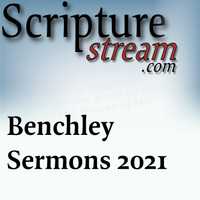What is the most foundational pursuit?
- To love, seek, and do what is true.
- John 3:16-21
- John 4:1
Culture of truth
- Context of truth is universal.
- Truth is loved, sought, held to
- Encourage honest discussions
- Questions answered with truth in a spirit of love
- Never settle
- All levels of seekers welcome
- Spread culture to all spheres of influence
Questions
- How do you teach someone the gospel if they don’t believe there is a God or the Bible is His word?
- What evidence convinces you the Bible is from God and that there is a God?
- What evidence is there that the texts are the words of God and have been copied accurately?
How were the Bible texts originally composed?
- Hebrews 1:1-2 – Transmission history of about 1000 years (1000 years for the Old Testament, 50 years for the New Testament).
- How?
- God speaking to us through prophets, Jesus, and apostles.
Composition of the Old Testament
- Purpose of the New Testament
- Ten commandments – Deuteronomy 10
- Moses wrote the words of the law in a book.
- The “law of Moses” became a formal law.
- Torah (first 5 books)
- Historical books – 1, 2 Samuel, 1, 2 Kings, 1, 2 Chronicles
- The proverbs
- The psalms
- Writings of the prophets
Composition of the New Testament
- Christians did not have a compiled New Testament for about 400 years after Jesus’ time.
- At first, the gospel spread orally.
- Move from oral to written transmission follows the needs of the church
- Period of composition: 30s AD to just before the end of the first century
- Authors: primarily apostles
- Purpose of the writings
The “Original Bible”
-
Production of the autographs was recorded in the Bible.
-
The Old Testament and New Testament both state they were inspired by God
-
Why don’t we have the originals?
- Original materials wore out.
Witnesses to the Old Testament text
Greater weight:
Primary sources; Copies of ancient Hebrew manuscripts
Dead Sea Scrolls; Masoretic text
Secondary sources; Versions: ancient translations into other languages
Septuagint; Latin vulgate
Tertiary sources: Paraphrase of the Hebrew text
Lesser weight:
Quaternary sources: Quotations of the Hebrew text in Greek
Dead Sea Scrolls
- Probably produced in Hasmonean period (152-63 B.C.) and early Roman period (63 B.C. – 68 A.D.).
Witnesses to New Testament text
Greater weight
Manuscripts
Written in Greek
To date, 5745 known manuscripts.
New Testament versions
Translations into other languages
15,000-20,000 such documents, ranging in date from 3rd to 16th centuries AD
Lesser weight
Citations
Citations of the New Testament in sermons, commentaries, letters, etc.
Over 1 million known citations, ranging in date from 1st to 13th centuries AD
Textual criticism
- Process of diligent appraisal and comparison of texts.
Recovering the Old Testament text
-
Two basic steps:
-
Look at Masoretic text
-
Compare Dead Sea Scrolls
-
Recovering the New Testament text
- Compare available manuscripts
Reference materials
- Randall Price, Searching for the Original Bible
